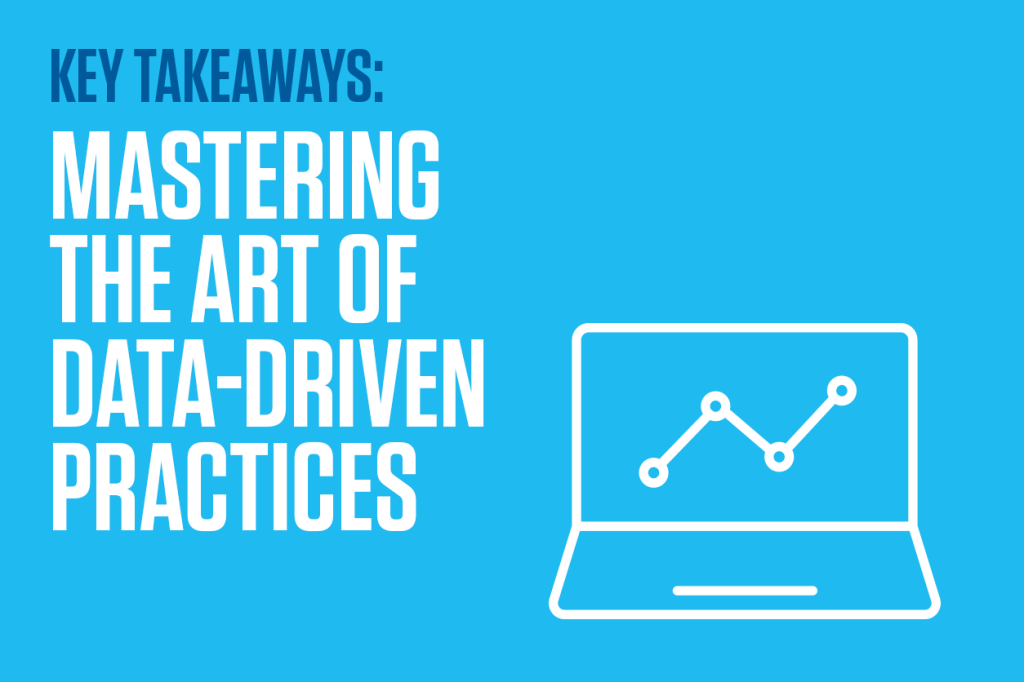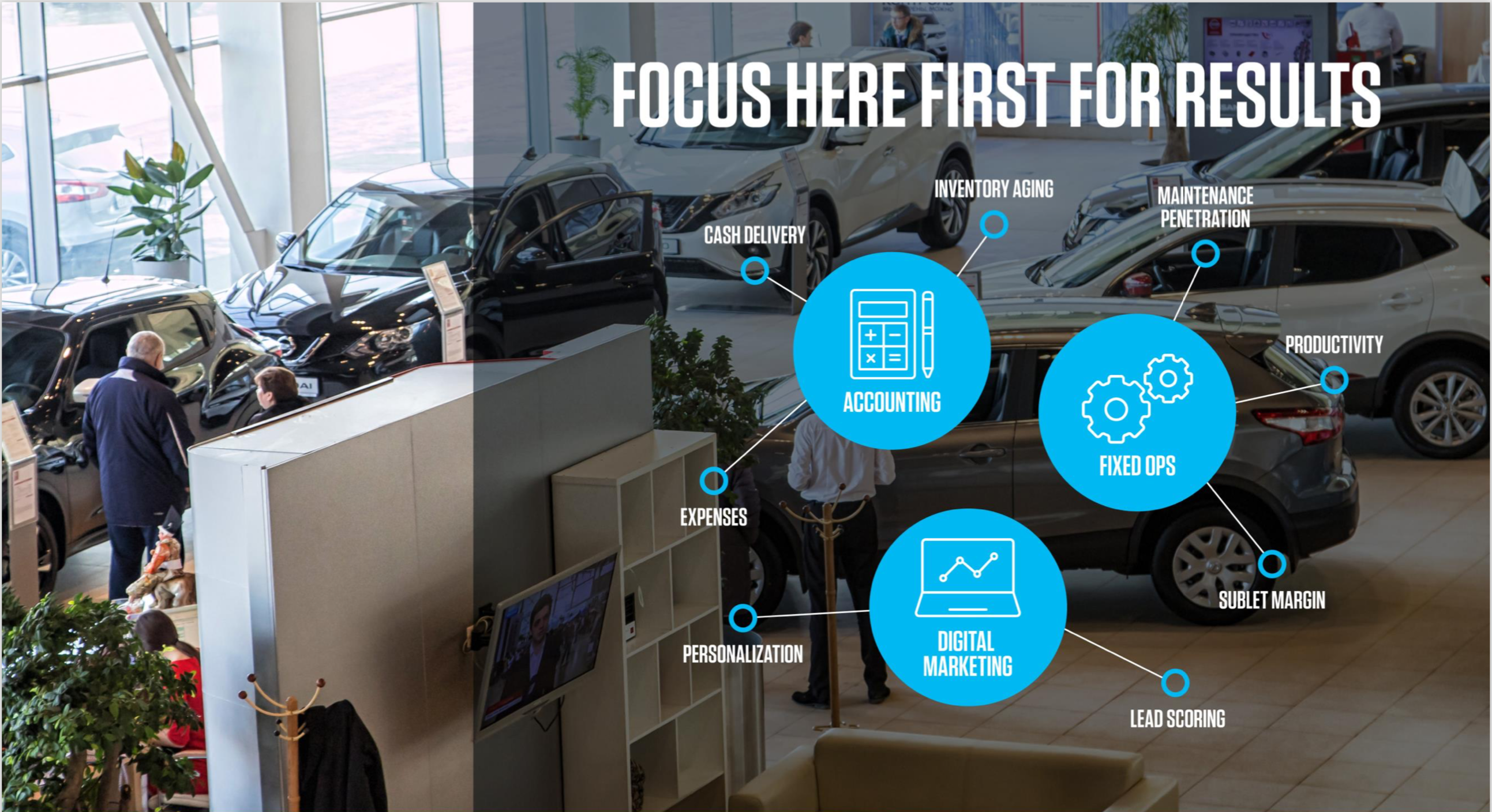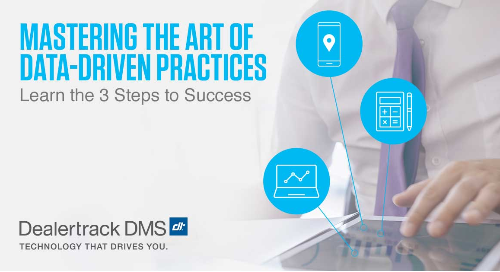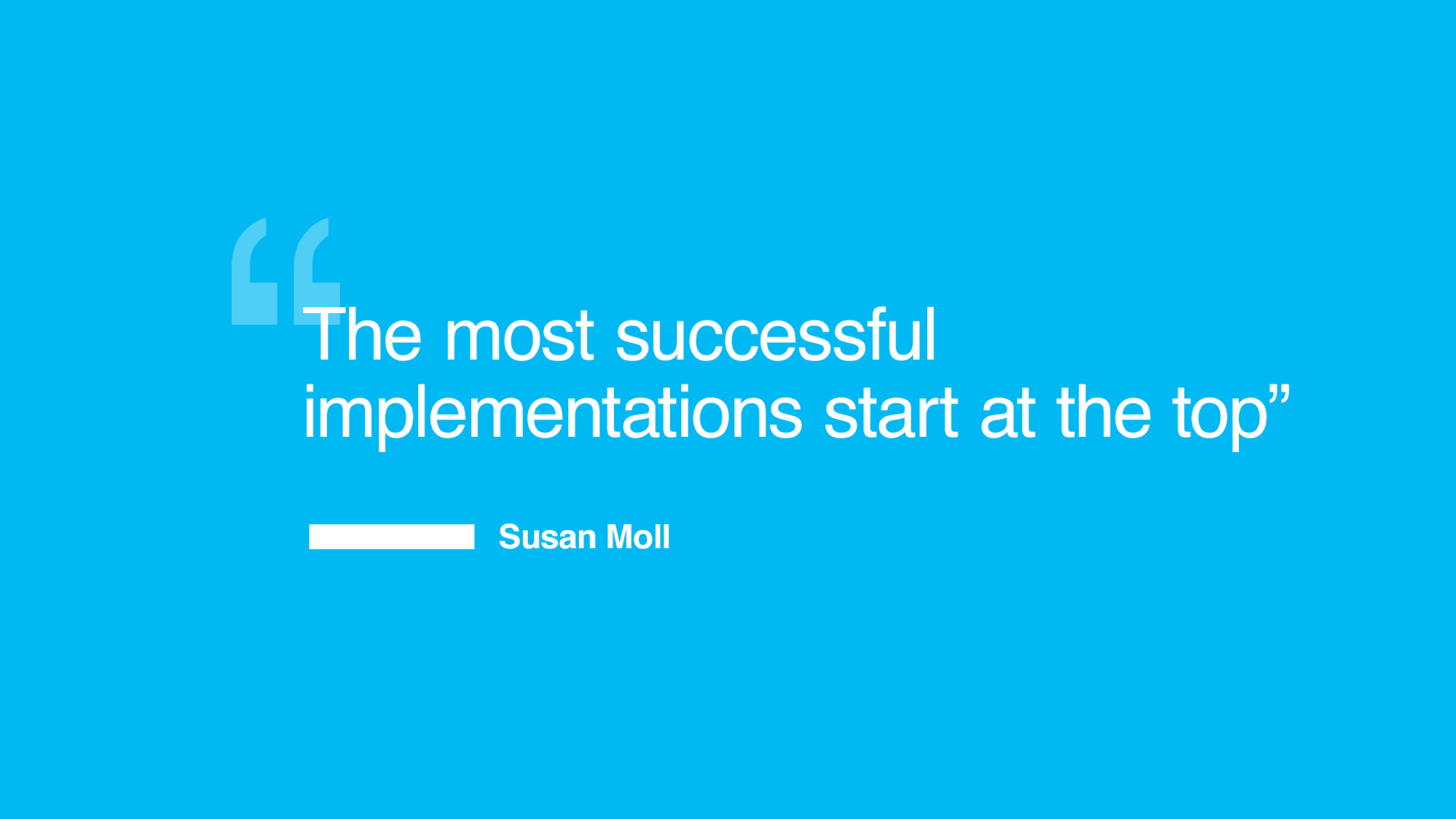Data is everywhere in your dealership. You have access to cold, hard facts about every aspect of operations, from profit margins to customer demographics to the average time of service visits. You know you should be putting all that data to work to drive business decisions, but figuring out where to start can be overwhelming.
The benefits of adopting — and consistently managing — data-driven practices are compelling. Dealerships that have figured out how to collect and extract meaning from their data sources have a competitive advantage. They use the insights found in the data to boost profits, improve operational efficiency, generate more sales revenue, and create transparency across all departments.
Unfortunately, you can’t just walk in one morning and declare, “We are now a data-driven organization,” and expect results. The transition requires the cultivation of a culture that understands and values how data can positively impact the business. Until you get team members on board, nothing will change.
I’ve Got a Feeling
Change is a pretty scary word for most people. Introduction of new, data-driven practices can feel threatening to team members who may be resistant to learning new systems or changing their work habits. If things are going well the way they are, why make changes?
It’s a common sentiment. Even though there is more data available than ever before, 39% of organizations say that making decisions based on gut feeling or experience is good enough.*
Part of cultivating a culture that thrives on using data to make strategic decisions is recognizing the emotional aspect of embracing analytics. Help team members understand how data is just another tool the dealership can use to improve operations. While their job responsibilities may change a bit, they will now have the resources to make a real impact on the success of the dealership.
According to Mandi Fang, vice president and general manager of Dealertrack DMS, organizations that are able to successfully create and execute data-driven cultures demonstrate how collaboration across the entire dealership shapes decisions at the management level.
“Remember to share your progress, including your successes and the areas you’re still working on, with your employees across all levels on a regular basis,” said Fang. “It can be a difficult transition, but consistency is key.”
Consistency Over Time
To make lasting change happen, you have to be vigilant. Only 37% of organizations that pledged to become more data-driven have successfully met that goal.** Organizations that stay the course ultimately provide better experiences for their customers because they are better attuned to market demands.
Team members need to see how their work is utilized by the management team to drive decisions. Make sure everyone across all levels understands the value of each metric that is monitored and how it supports the goals of the dealership. Communicating expectations openly with the entire team on a regular basis and explaining how individual contributions combine into larger analytical models can inspire long-term commitment to the effort.
Experience is valuable, but by motivating your team to inform their expertise with data, your dealership will get better results.
Steps to Becoming a More Data-driven Dealership
Now it’s time to get started. Just having access to data doesn’t equate to insights. To successfully implement data-driven practices, you need to follow three key steps:
1. Define your business objectives
Fang recommends developing a one-page document that summarizes your mission, vision, and objectives to clarify why you are seeking to become a data-driven dealership. What are your short- and long- term goals? Looking to boost sales revenue? Need to tighten operational costs to combat shrinking profit margins? Expand your objective beyond what data you think you can get from your tools.
Narrowing the scope of what you want to accomplish is the first step to setting goals that are realistic and actionable. Prioritize three to five measurements that will drive results for your organization.
Slow and steady wins the race. Start with the item that is likely to have the most positive impact, then continue to move down your list and implement the remaining objectives over time.
2. Identify the right process, people, and tools to execute the plan
Identify actionable key performance indicators (KPIs) and metrics to support the identified business objectives. Analyze current data sources for the most pertinent information. Consider if there is data missing that would be useful to answer key questions. Weed out data that does not support business goals.
Then define a process to calculate each KPI and track each metric, including assigning team roles, establishing the frequency of readouts, and outlining what needs monitoring along the way. Typically, the heads of each department are accountable to track metrics, relying on members within their team to manage the data and follow good practices to ensure the validity of reporting.
Finally, implement the right tools to configure, collect, and visualize the data. Automating the process as much as possible is critical to ensure accuracy and consistency of reporting.
“Within my leadership team, we created a set of 10 KPIs to measure ourselves and the performance of the business,” said Fang. “With some of the KPIs, we discovered we didn’t have one tool or system that can easily provide the data we need, so we continue to work toward automating the process still today.”
3. Measure, monitor, and manage
Doing the upfront work to foster a culture that thrives on data-driven practices pays off in step three. If team members are advocates for the process of collecting and analyzing data and see value in the results of their work, you will continue to get the insights you need to drive strategic decision-making.
“People don’t do what you expect, but rather what you inspect,” observed Fang. “Getting started is only half the battle.”
It is also important to monitor progress on a regular basis and make adjustments as needed. For example, if different departments are using separate systems, the manual process of connecting data inputs may be too time-consuming. Upgrading the technology infrastructure may be required. Solicit input from team members and respond by removing roadblocks or adapting processes to stay current.
The Road to Success Is Paved With Data
Becoming a dealership that succeeds with data-driven practices is challenging, but the rewards are worthwhile. The process begins with the cultivation of a culture that motivates team members to embrace the value of data and willingly contribute in new ways. With a clear picture of business goals, measurable KPIs can be established and championed across the organization.
Want to learn more? Click here for the “Mastering the Art of Data-driven Practices” webinar. You’ll discover ways you can leverage data for more profitable dealership operations across fixed ops, accounting, sales, and digital marketing.
*BARC Institute, 2014 Information Culture Study.
**NewVantage Partners, Big Data Executive Survey, 2017.





















